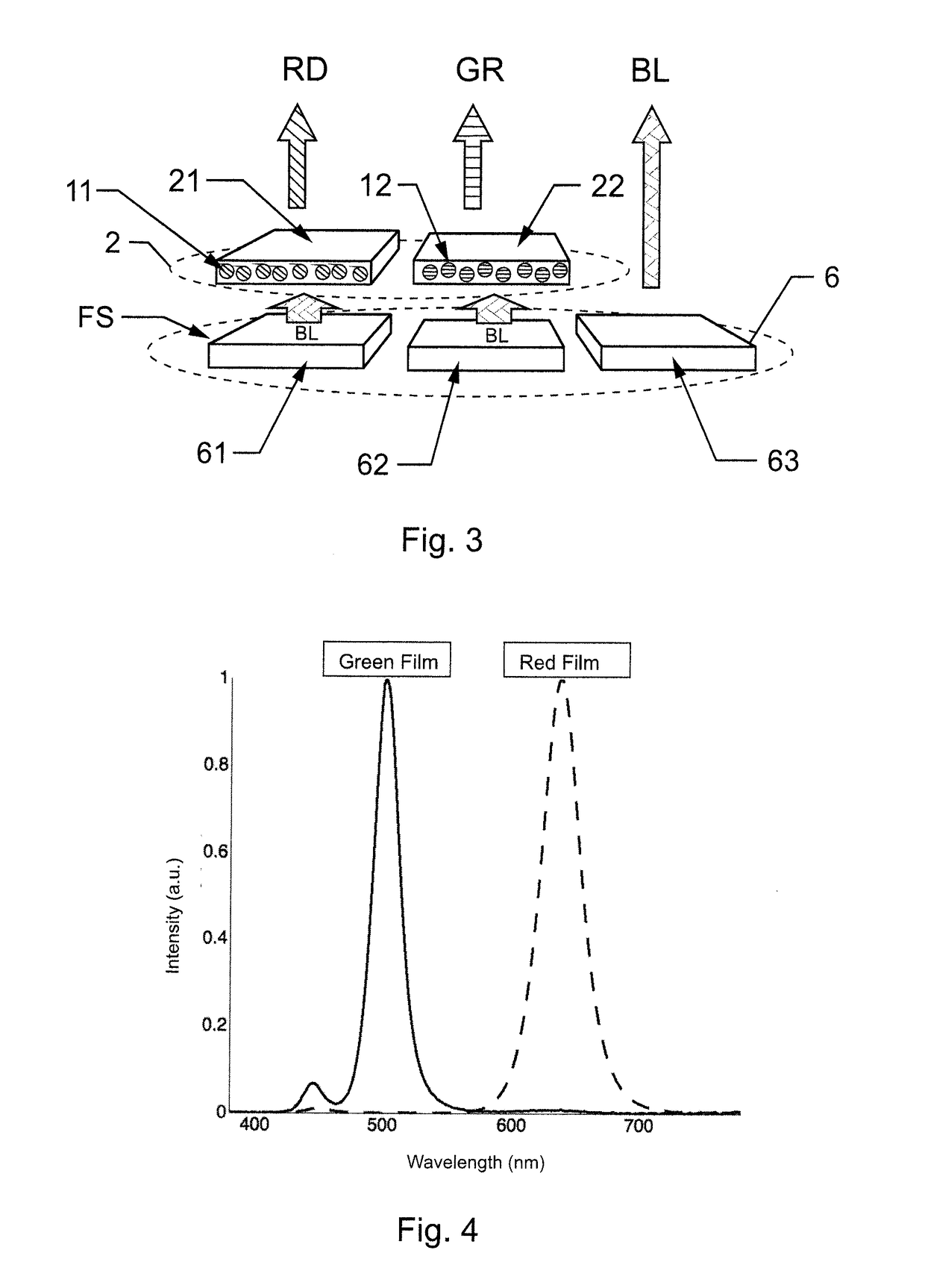Display device
a technology of display device and display screen, which is applied in the field of luminescent crystals, can solve the problems of impossible display of highly saturated colors, and achieve the effect of simple technologies
- Summary
- Abstract
- Description
- Claims
- Application Information
AI Technical Summary
Benefits of technology
Problems solved by technology
Method used
Image
Examples
example 1
[0105]Luminescent crystals with green emission (LCs) were synthesized according to literature procedure presented by Protesescu et al. (Nano Lett., 2015, 15, 3692-3696). The LCs concentration was defined as 0.54% by heating up the dispersion to 450° C., which led to evaporation of the solvent and burning away the ligands. The dispersion was optically characterized with a Quantaurus C11347-11 Total Quantum Yield device (equipped with an integration sphere). The LCs dispersion, excited at 450 nm had a photoluminescence peak centered at 500 nm with a FWHM of 23 nm and a photoluminescence quantum yield of 89%.
[0106]11.75 wt % of this formulation was mixed with 87.25 wt % of 30 wt % PMMA (Plexiglas 7N) solution in toluene and 1 wt % TiO2 scatter particles (Kronos 2800) and directly poured onto a glass substrate preheated to 60° C. The excess of the mixture was removed with a doctor blade, and after 4 h 60° C. drying resulting in an approximately 400 μm thick film. Upon excitation with 45...
example 2
[0108]Red emitting LCs were synthesized according to literature procedure presented by Protesescu et al. (Nano Lett., 2015, 15, 3692-3696). The LCs concentration was defined as 0.06% by heating up the dispersion to 450° C., which led to evaporation of the solvent and burning away the ligands. The dispersion was optically characterized with a Quantaurus C11347-11 Total Quantum Yield device (equipped with an integration sphere). The LCs dispersion, excited at 450 nm) had a photoluminescence peak centered at 638 nm with a FWHM of 33 nm and a photoluminescence quantum yield of 72%.
[0109]16.875 wt % of this formulation was mixed with 80.125 wt % of 30 wt % PMMA (Plexiglas 7N) solution in toluene and 3 wt % TiO2 scatter particles (Kronos 2800) and directly poured onto a glass substrate preheated to 60° C. The excess of the mixture was removed with a doctor blade, and after 4 h 60° C. drying resulting in an approximately 400 μm thick film. Upon excitation with 450 nm light the film exhibit...
PUM
| Property | Measurement | Unit |
|---|---|---|
| size | aaaaa | aaaaa |
| size | aaaaa | aaaaa |
| thickness | aaaaa | aaaaa |
Abstract
Description
Claims
Application Information
 Login to View More
Login to View More - R&D
- Intellectual Property
- Life Sciences
- Materials
- Tech Scout
- Unparalleled Data Quality
- Higher Quality Content
- 60% Fewer Hallucinations
Browse by: Latest US Patents, China's latest patents, Technical Efficacy Thesaurus, Application Domain, Technology Topic, Popular Technical Reports.
© 2025 PatSnap. All rights reserved.Legal|Privacy policy|Modern Slavery Act Transparency Statement|Sitemap|About US| Contact US: help@patsnap.com


